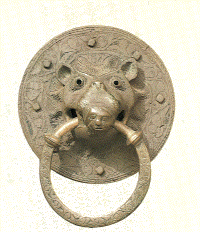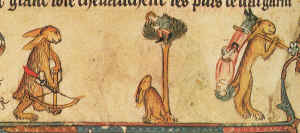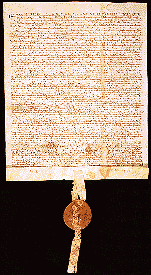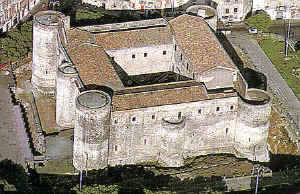

| TRS 220: Politics of the Eleventh, Twelfth, and Thirteenth Centuries |
|
| Additional Information for Topic 6 |
|
The Norman Conquest of England
Viking Expansion and Norman Achievements
Edward the Confessor, king of England
Harold, earl of Wessex, king of England
William I, duke of Normandy (the
Conqueror), king of England 1066-1087
"In speech he was fluent and persuasive, being skilled at all time in making
clear his will. If his voice was harsh, what he said was always suited to the occasion. He
followed the Christian discipline in which he had been brought up from childhood, and
whenever his health permitted he regularly, and with great piety, attended Christian
worship each morning and evening and at the celebration of mass."
Battle of Stamford Bridge: September 25, 1066
Battle of Hastings: October 14, 1066
| Bayeaux Tapestry |
|
| King Edward and Harold | Harold Swears Oath |
| Harold the King | Building the Fleet |
| The Normans at Sea | Norman Fast Food |
| William and Odo | Civilian Casualties |
| Battle of Hastings | Death of Harold |
(Map of William's New Norman French Kingdom)
Henry I, duke of Normandy, king of England 1100-1135
|
John, king of England 1199-1216 Magna Carta 1215 |
 Philip II Augustus, king of France 1180-1223 |
Louis IX, king of France 1226-1270
The Successors of Charlemagne: The Germanic Emperors
| 1. The Imperial Ideal: One
Christendom 2. The Empire Looks South (10th-13th Centuries) 3. The Italian City States 4. The Papacy |
 |
| Frederick I (Barbarossa), Emperor 1152-1190 | Frederick II's Castle in Catania, Castello Ursino |
| Frederick II, Emperor 1215-1250 Interregnum, 1250-1273 |
The Northern Empire |
Politics of the Twelfth and Thirteenth Centuries: Main Points
1. The Idea of the "State" was not yet Developed
2. "Feudal Monarchies and Principalities" were Held Together by Loyalties to Rulers, not by Loyalty to a Territory or People or Culture
3. "Feudal Monarchies and Principalities" were Diverse in their Culture, Peoples, and Languages. Only in the Modern World did the Fiction Evolve that Nation States were Composed of Homogeneous Peoples and Cultures
4. The Territorial Divisions of Europe were Far from Fixed and Predictable